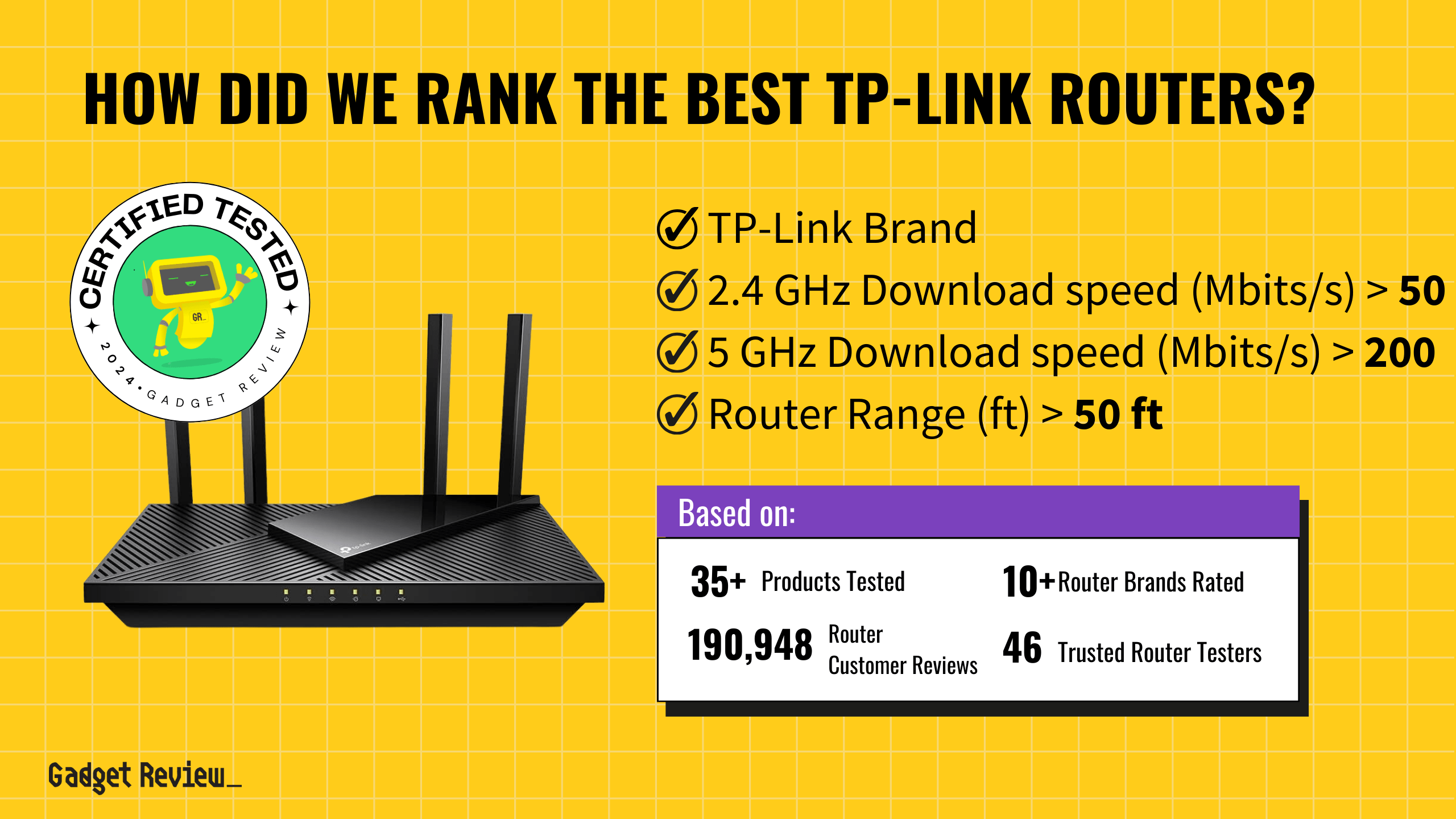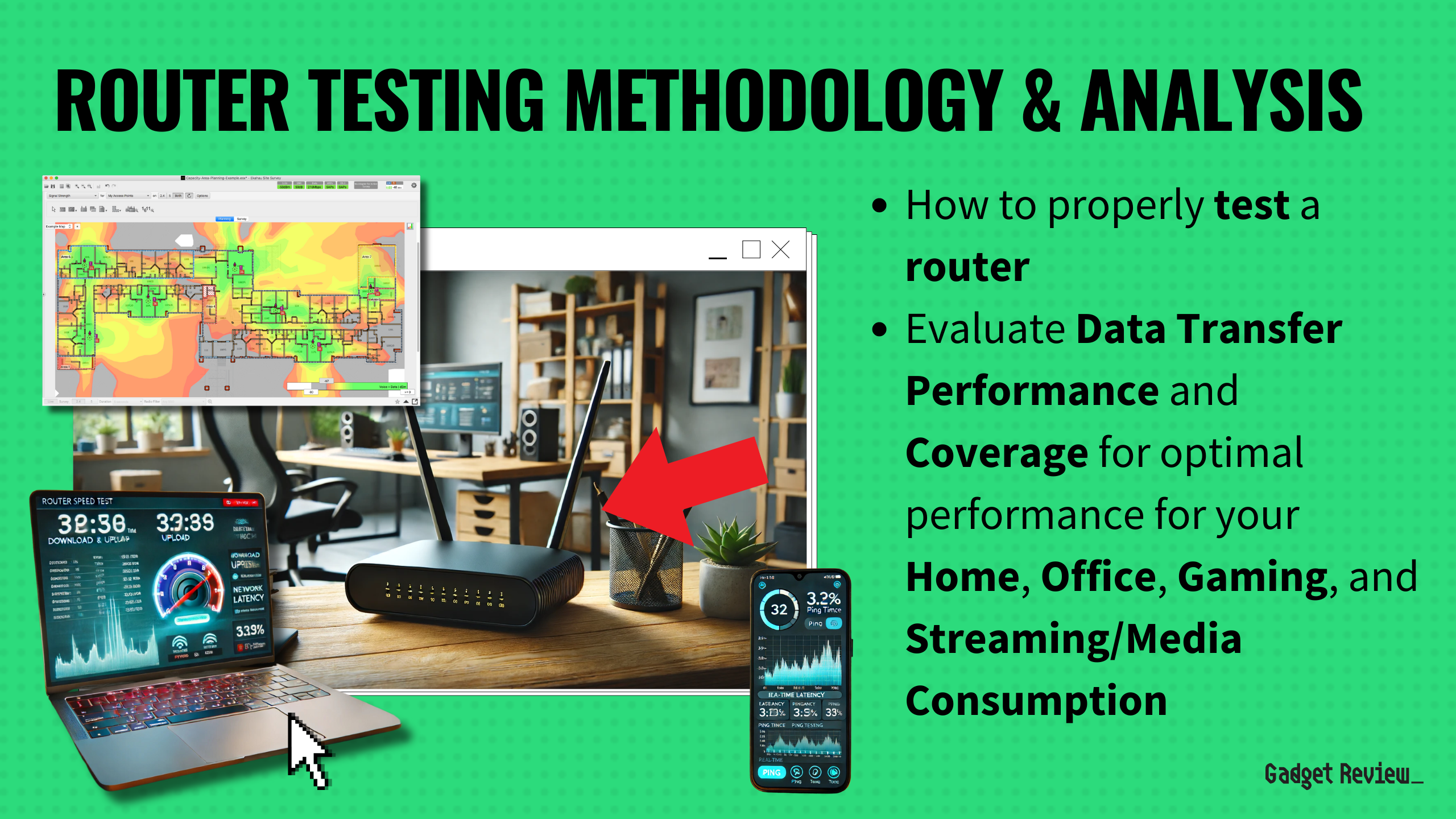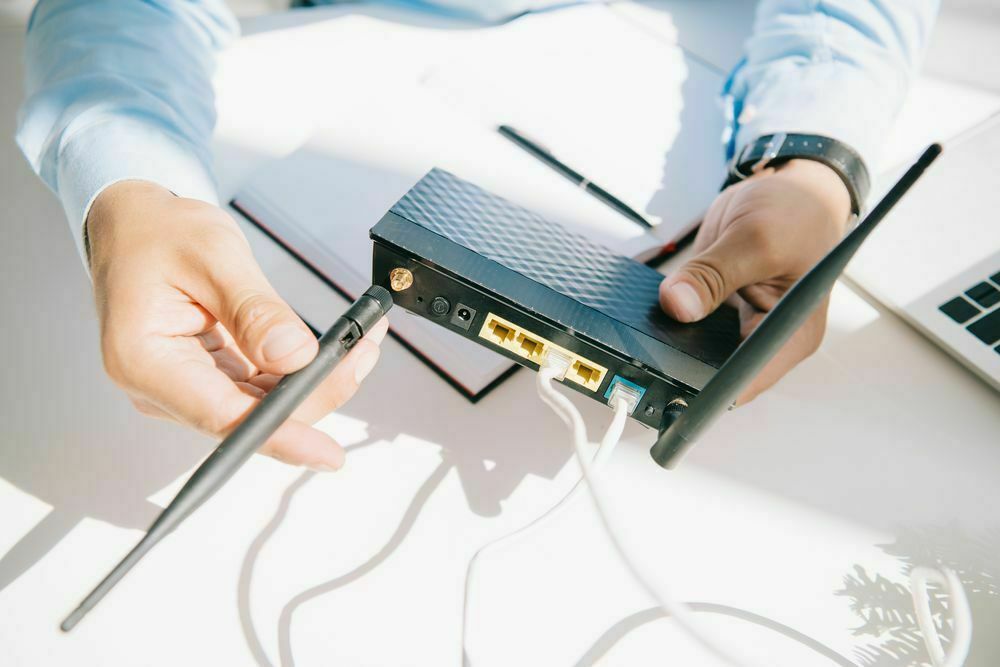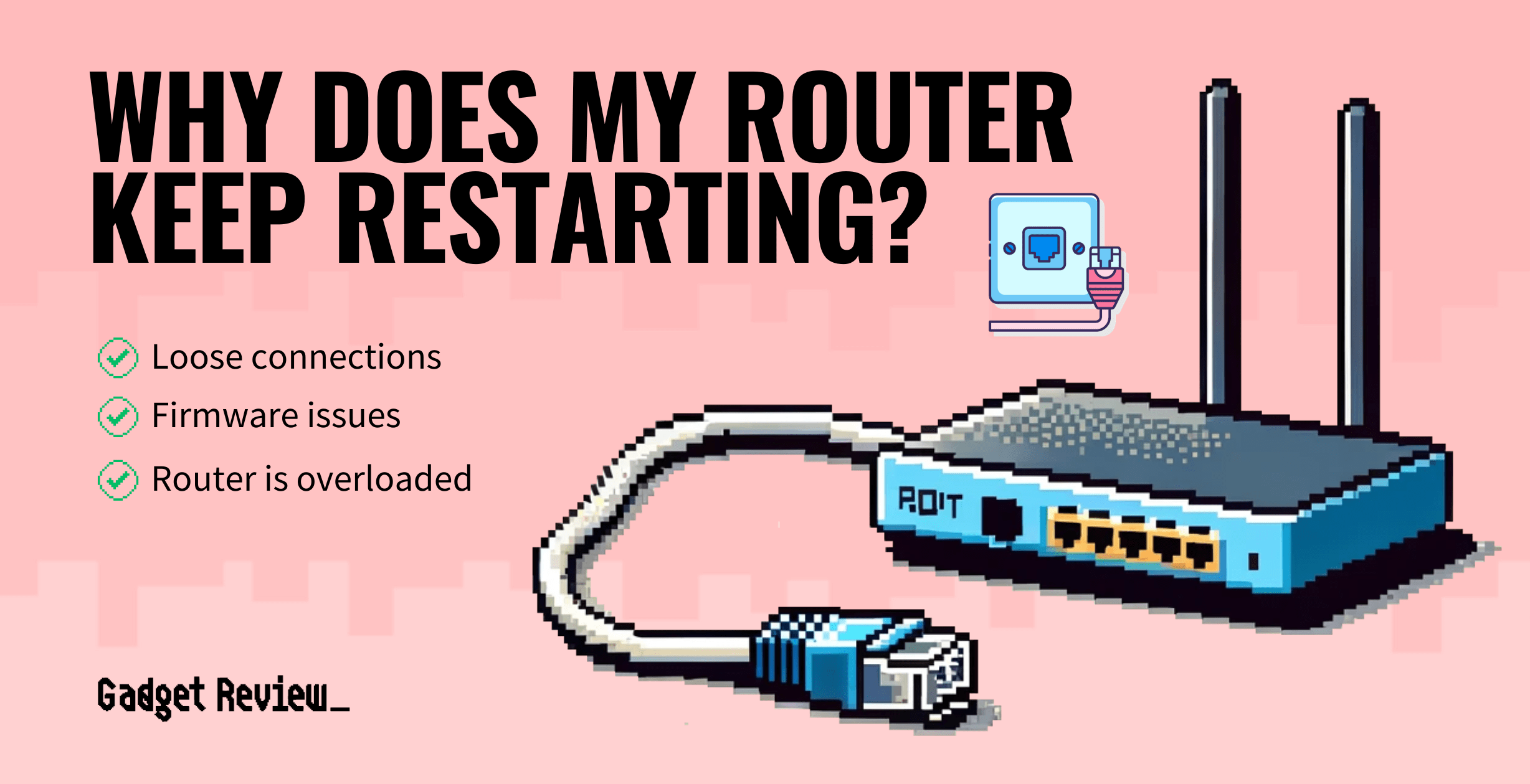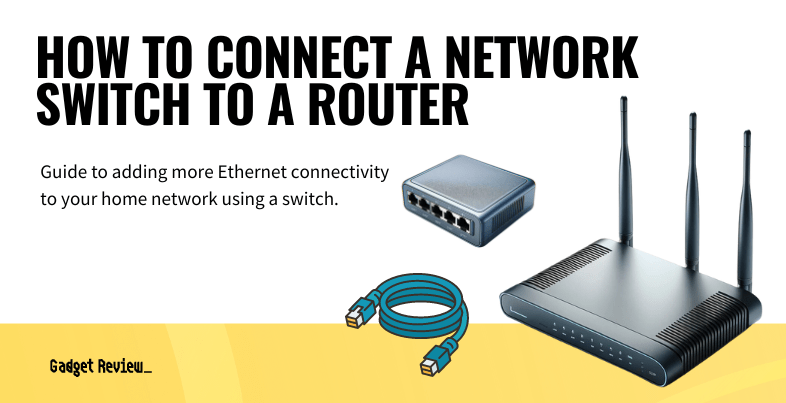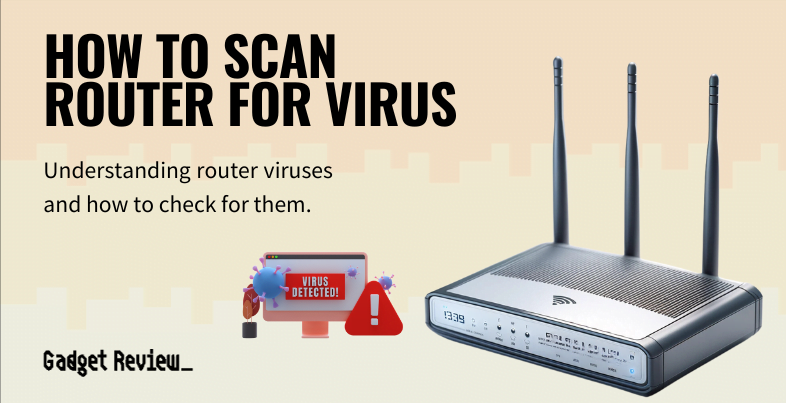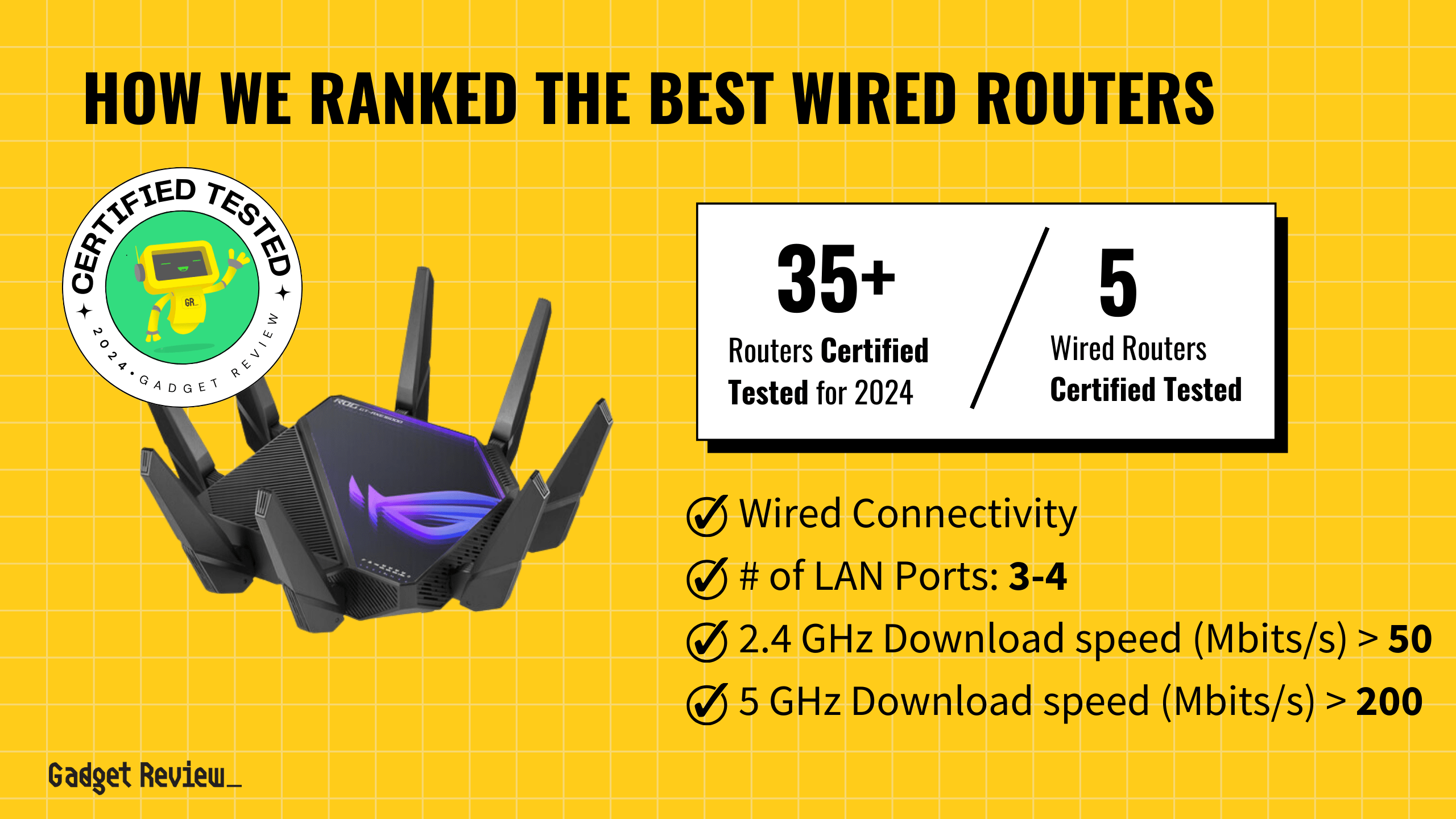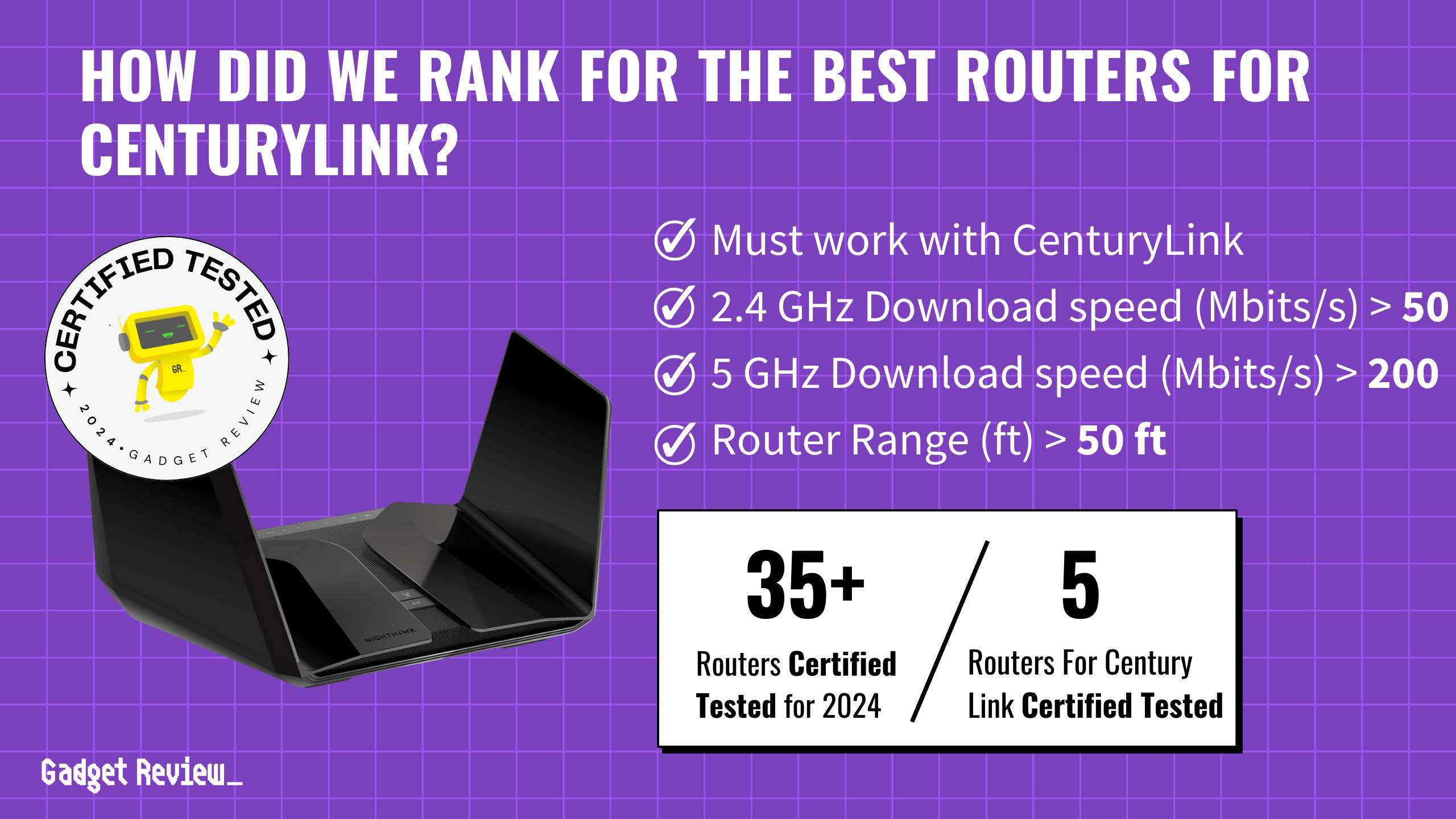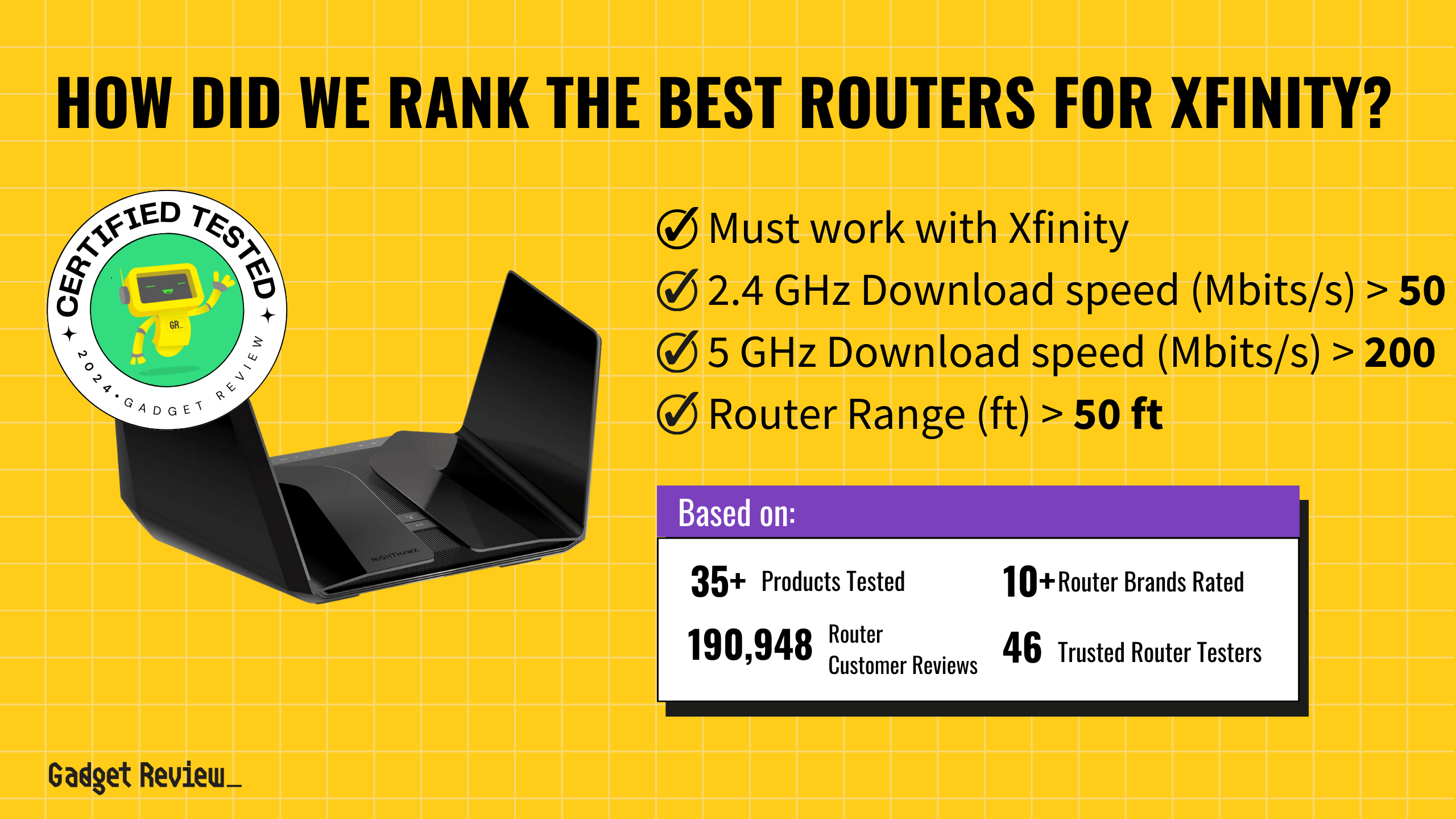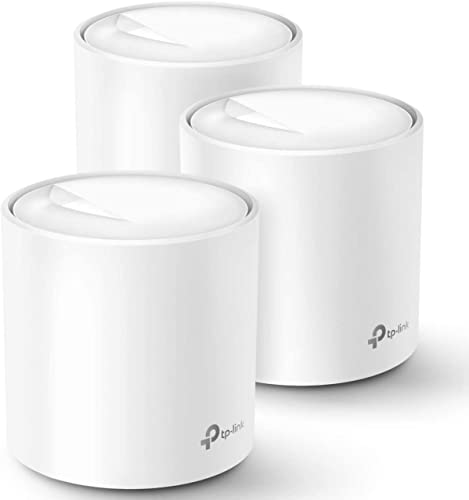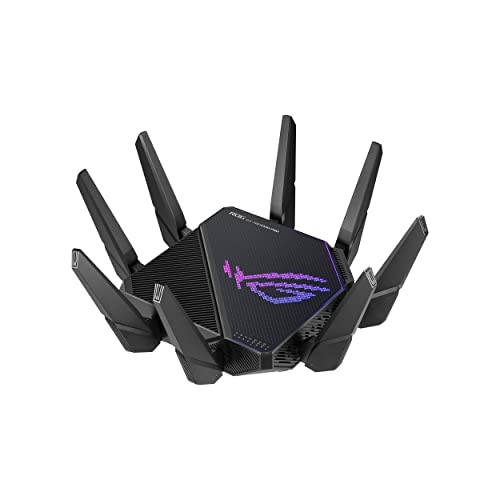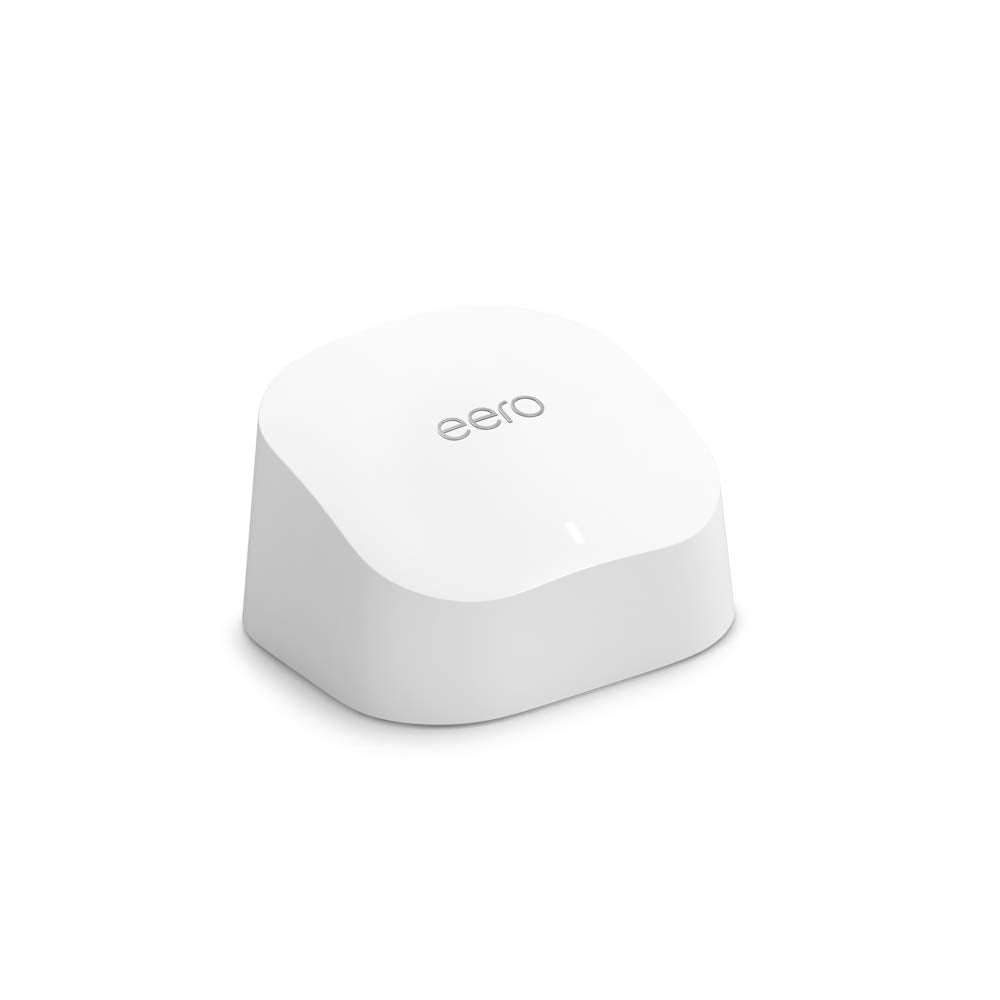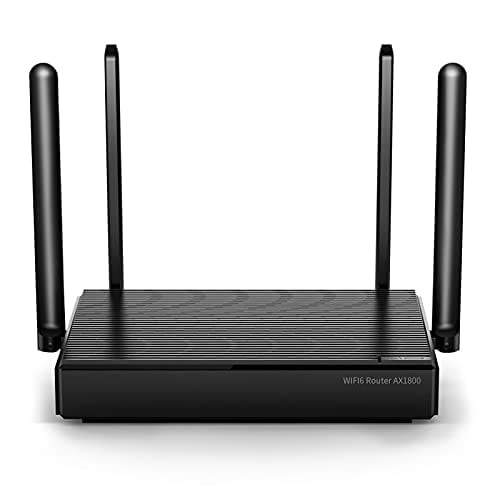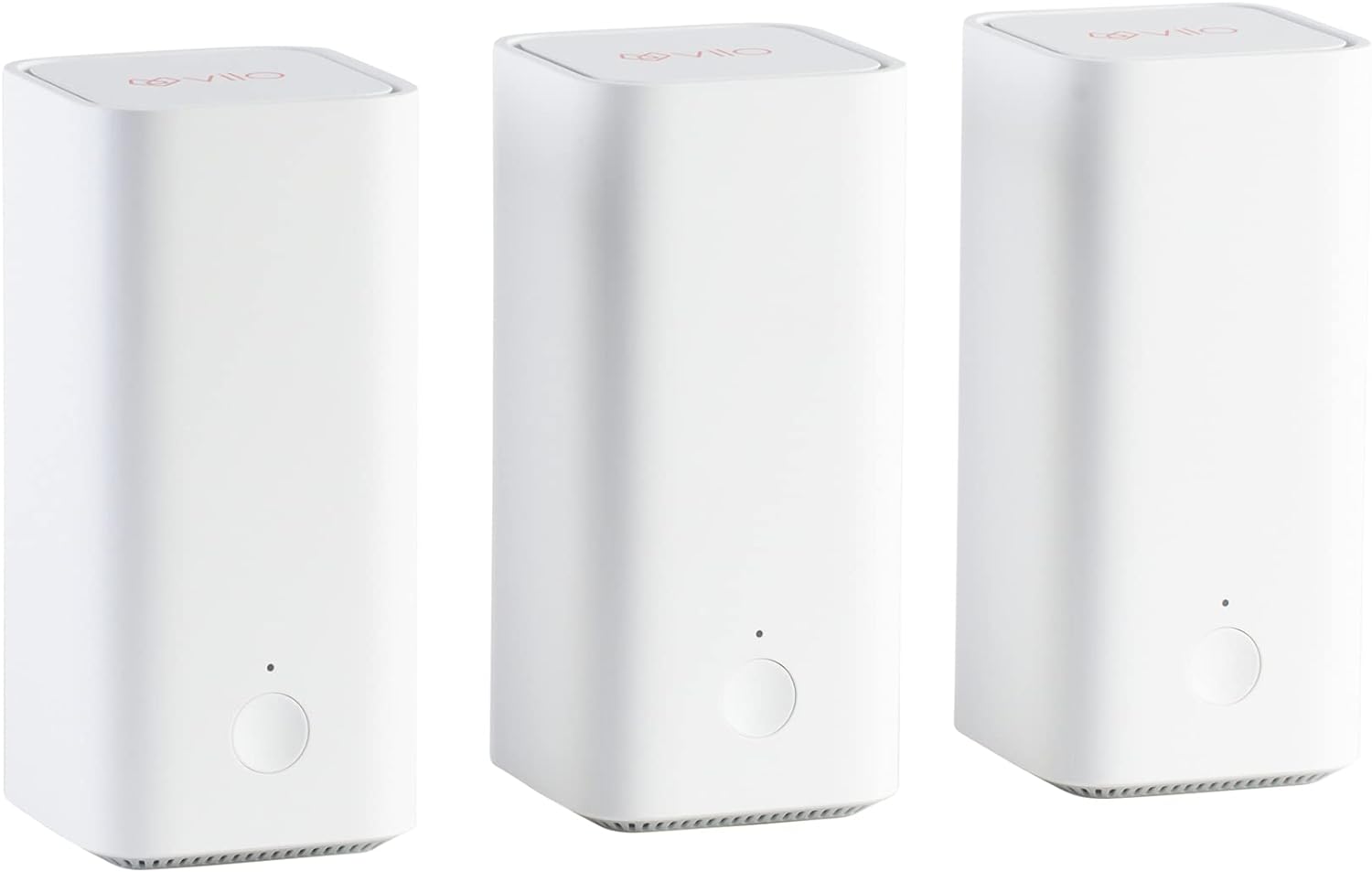When you’re looking for the best TP-Link routers, performance, reliability, and ease of use are critical factors. They should excel on the 5 GHz band, offering fast speeds and broad coverage. These models are ideal for gaming and streaming, with features such as mesh network compatibility and easy setup through user-friendly apps. They ensure robust performance and extended coverage for your home network. While TP-Link offers some excellent options, we also have a guide for the top routers regardless of brand if you’re interested.
Our buying guide evaluated 37 routers, certifying three top-performing models through thorough analysis. We reviewed 192,584 customer and expert reviews. Our rigorous process, using our scientific True Score system, ensures that the winning products are reliable and meet your high standards.
How Did We Rank the Best TP-Link Routers?
To identify the top TP-Link routers, we analyzed over 200 sites, evaluating testing methodologies and customer feedback. Our review process highlighted 2 essential test results, 2 desirable features, and 1 crucial specification. By combining expert reviews and our true score system, we created a buying guide that showcases the best routers for performance and reliability.
Our commitment to unbiased reviews is powered by our ‘True Score’ system, targeting low quality and fake reviews. When you shop through our links, you’re backing our mission. Dive deeper to see how.
Minimum Specifications
- Must be TP-Link
Test Criteria
- 2.4 GHz Download Speed: A download speed on the 2.4 GHz band of at least 50 Mbits.
- 5 GHz Download Speed: A download speed on the 5 GHz band of at least 200 Mbits.
? “Nice To Haves”
- Router Range: A range of at least 50 feet before the signal from the router begins to become noticeably weaker.
- Latency: A latency of 30 ms or less.
Latest Updates
- 06/18/2024: Republished the list to include the best TP-Link routers based on our True Score system.
Top TP-Link Routers For 2025
Prices accurate at the time of publishing

Best Overall

Runner Up

Best Value

Best Budget

Best Mid-Range

Premium Pick
TP-Link Archer GX-90
Best For Gaming
Gamer-focused, offering dedicated gaming bandwidth, high speeds, and essential features for a competitive edge; a great choice for immersive online gaming experiences.
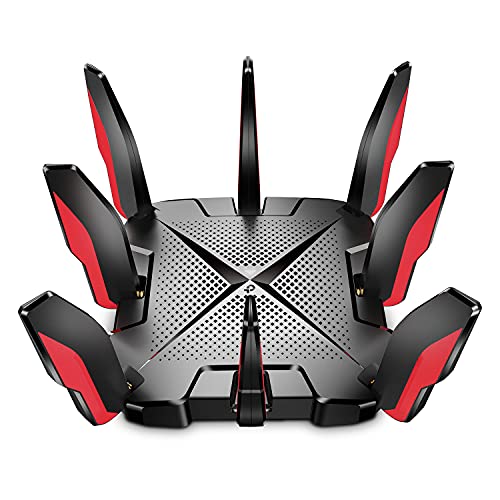
True Score
85847Experts
918kCustomers
Absolutely Fresh
 SAVE $80$249.99$169.97
SAVE $80$249.99$169.97Read More
Snapshot
Reasons to Buy
- Ease of use
Reasons to Avoid
- Below average Wi-Fi speeds
- Middling Wi-Fi range
Specifications

# of LAN Ports 3 
Frequency Bands 2.4 GHz, 5.0 GHz, 6.0 GHz 
MU-MIMO Support Yes 
Wireless Standard AC, AX, N 
Mesh System Yes 
Quality of Service Prioritization Yes 
# of Phone Ports n/a 
# of WAN Ports 2 
App Compatible Yes 
Available Storage n/a 
Band Technology Tri 
Battery Charge Time – 
Data Encryption Type WPA3 
Energy Star Certified n/a 
Integrated Modem No 
LAN Port Speed – 
Number of Antennas 8 
Parental Controls Available 
Processor Cores Triple 
Processor Speed 1.7GHz 
WiFi Range 2500 sq.ft 
WiFi Speed 6.6 Gb 
Wired Speed Unknown All Specs
Test Results
2.4 GHz Download speed (Mbits/s) 75 5 GHz Download speed (Mbits/s) 280 6 Ghz Download speed (Mbits/s) 0 Latency (ms) 20 Router Range (ft) 40 2.4 GHz Upload speed (Mbits/s) 44 5 GHz Upload speed (Mbits/s) 163 6 Ghz Upload speed (Mbits/s) 0 All Tests
All Retailers
- $169.97$250Save $80
- $229.99
- $298.00
Our Verdict
If you’re looking for a gaming-focused router, the TP-Link Archer GX-90 has all of the performance you need and an extremely useful onboard feature: a dedicated gaming band. With a 5 GHz download speed of 279.6 Mbits/s and an upload speed of 162.7 Mbits/s, it’s engineered for an uninterrupted gaming experience, ensuring that every online match is played without lag and with crystal-clear communication. Thanks to the dedicated gaming band, you’ll not have to worry about sharing your connection with anyone streaming video – they’ll be on a separate band and streaming worry-free.
On the 2.4 GHz band, the GX-90 delivers a download speed of 75.39 Mbits/s and an upload speed of 44.2 Mbits/s. This is great for devices that can’t support 5 GHz frequencies and also offers solid performance for basic web browsing or watching standard-quality videos.
The gaming focus of the GX-90 is further supported by the features you’d expect from it, like the quality of service prioritization, but it also comes with a game accelerator that identifies gaming traffic and automatically accelerates it, along with a statistics monitor so you can check latency on the fly and see if something is degrading your performance. With an out-of-the-box latency of 20 ms, it’s an excellent way to keep delays to a minimum when gaming and helps you stay immersed and unbothered.
If the one thing you want to do with your router more than anything else is game, the GX-90 is a solid choice. With its solid performance across both frequency bands and gaming-centric features baked right into the router, it’s an excellent choice for gamers. It comes at an affordable price compared to other gaming routers from other brands, landing squarely in the mid-range, though it is among the most expensive of the TP-Link routers on our list.
Read Less

Best Overall

Runner Up

Best Value

Best Budget

Best Mid-Range

Premium Pick
TP-Link Archer AXE75
Best For Small Business
Future-proof with 6 GHz support, solid speeds, and tri-band capabilities; perfect for seamless streaming and advanced network setups.
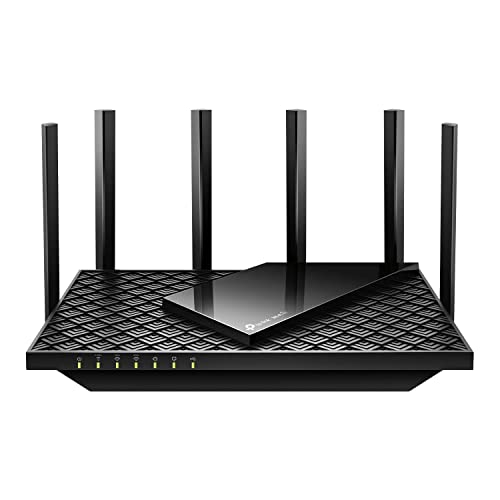
True Score
79794Experts
852kCustomers
Mixed Reviews
 SAVE $84$199.99$116.00
SAVE $84$199.99$116.00Read More
Snapshot
Reasons to Buy
- Good WiFi speeds
- Adequate range
- Simple set up
Reasons to Avoid
- Average download speeds
- Limited coverage
- Subscription-based security solutions
Specifications

# of LAN Ports 4 
Frequency Bands 2.4 GHz, 5.0 GHz, 6.0 GHz 
MU-MIMO Support Yes 
Wireless Standard AC, AX 
Mesh System Yes 
Quality of Service Prioritization Yes 
# of Phone Ports n/a 
# of WAN Ports 1 
App Compatible Yes 
Available Storage n/a 
Band Technology Tri 
Data Encryption Type WPA3 
Energy Star Certified n/a 
Integrated Modem No 
LAN Port Speed Gigabit Ethernet 
Number of Antennas 6 
Parental Controls Yes 
Processor Cores Triple 
Processor Speed 1.7GHz 
WiFi Range 2500 sq.ft 
WiFi Speed 2.4GHz 
Wired Speed 1000 Mb All Specs
Test Results
2.4 GHz Download speed (Mbits/s) 65 5 GHz Download speed (Mbits/s) 309 6 Ghz Download speed (Mbits/s) 318 Latency (ms) 9 Router Range (ft) 60 2.4 GHz Upload speed (Mbits/s) 0 5 GHz Upload speed (Mbits/s) 0 6 Ghz Upload speed (Mbits/s) 0 All Tests
All Retailers
- $116.00$200Save $84
- $116.00$180Save $64
- $159.00
Our Verdict
If you want to future-proof your next router purchase, the TP-Link Archer AXE75 offers great performance and the added benefit of supporting the 6 GHz band. With a 6 GHz download speed of 317.9 Mbits/s, this router is ready to take on future devices, ensuring your network stays ahead of the curve.
The 5 GHz band features a download speed of 309.1 Mbits/s, which is great for homes and small offices where consistent, high-speed internet is a must for streaming HD content and engaging in online meetings without hiccups. The longer-ranged but slower 2.4 GHz band puts up a modest download speed of 65.05 Mbits/s, which is more than enough for standard web browsing and basic YouTube.
In addition to tri-band support, the AXE75 also provides MU-MIMO, mesh network compatibility, and quality of service prioritization, making it an excellent fit for businesses with many devices to manage. The QoS is also an excellent feature that helps improve your gaming experience by allowing you to prioritize your PC or console on the network to reduce lag spikes and improve download speeds. If you don’t need 6 GHz support, the AX55 will offer better speeds, but losing out on that third band means you’re also trading long-term compatibility for short-term performance.
While a more mid-range priced router (though definitely still on the budget end) the AXE75 offers great performance and tri-band capability to make it the last router you’ll need to purchase for a while for most small to medium homes and businesses. Plus, with its competent performance across multiple bands, the AXE75 is an excellent choice for anything from gaming to HD streaming to set up as the “primary” point of a mesh network.
Read Less
Did you know 64% of router reviewers are untrustworthy?
Our research found only 46 of 127 router reviewers as of December 2025 can be trusted. This is why Gadget Review is committed to calculating the most accurate product scores on the web.
To do this, we give every router review site a Trust Rating, which measures how trustworthy the site and their testing claims are. We then leverage AI & a machine learning model to combine and calculate the Trust Rating with data from experts and consumers to deliver the True Score, the web’s most accurate product quality rating.
 192,584
192,584Router Reviews Analyzed

37
Total Products Analyzed

Best Overall

Runner Up

Best Value

Best Budget

Best Mid-Range

Premium Pick
TP-Link Archer AX55
Best For Vpn
Excellently priced with superb performance; ideal for high-speed streaming and gaming with added mesh and MU-MIMO support for expansive coverage.
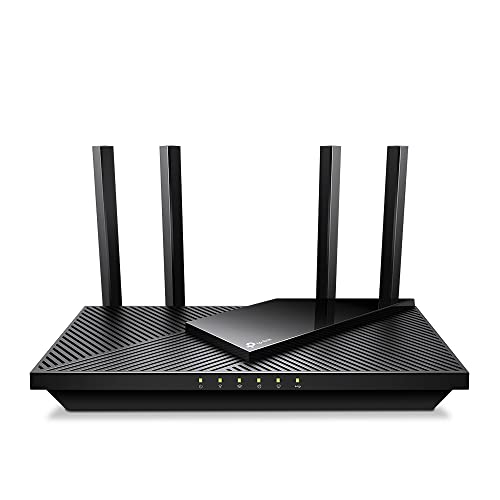
True Score
79783Experts
856kCustomers
Mixed Reviews
 SAVE $221$298.64$77.90
SAVE $221$298.64$77.90Read More
Snapshot
Reasons to Buy
- Good Download/Upload Speed
- Great Connection Range
- Simple Setup and Easy Configuration
Reasons to Avoid
- Slow 2.4 GHz Upload Speed
- High Latency
- Limited Ports
Specifications

# of LAN Ports – 
Frequency Bands – 
MU-MIMO Support – 
Wireless Standard – 
Mesh System – 
Quality of Service Prioritization – 
# of Phone Ports – 
# of WAN Ports – 
App Compatible – 
Available Storage – 
Band Technology – 
Data Encryption Type – 
Energy Star Certified – 
Integrated Modem – 
LAN Port Speed – 
Number of Antennas – 
Parental Controls – 
Processor Cores – 
Processor Speed – 
WiFi Range – 
WiFi Speed – 
Wired Speed – All Specs
Test Results
2.4 GHz Download speed (Mbits/s) 99 5 GHz Download speed (Mbits/s) 485 6 Ghz Download speed (Mbits/s) 0 Latency (ms) 0 Router Range (ft) 120 2.4 GHz Upload speed (Mbits/s) 54 5 GHz Upload speed (Mbits/s) 745 6 Ghz Upload speed (Mbits/s) 0 All Tests
All Retailers
- $77.90$299Save $221
- $79.99$100Save $20
Our Verdict
The TP-Link Archer AX55 is a budget router that still offers exceptional performance. With a 5 GHz download speed hitting a whopping 485.2 Mbits/s and an upload speed reaching an impressive 744.7 Mbits/s, it hits speeds that ensure smooth 4K streaming and lag-free gaming, making every online experience seamless.
With the 2.4 GHz band, the AX55 also does a great job, offering a download speed of 98.64 Mbits/s and an upload speed of 53.5 Mbits/s. This solid performance ensures that devices not supporting the faster 5 GHz band still enjoy stable internet for everyday tasks like web browsing and video calls.
With support for mesh networks, the AX55 is an inexpensive way to get another node into your network or start one by buying a few and setting them up around your home, giving you seamless coverage with minimal dead zones. Plus, with MU-MIMO support and quality of service prioritization, you can connect multiple devices to the network without worrying about the router becoming bogged down. If you’re a small business, the AX55 is an excellent choice for these reasons, plus, it has WPA3, giving you the latest security and protection from brute force attacks.
Whether you’re using it for a high-speed gaming session, binge-watching your favorite series in 4K, or ensuring your smart home devices stay connected, this router checks all the boxes you could hope for. It’ll also work in a business that needs to connect multiple devices. With its attractive pricing, excellent performance, and useful suite of features, the AX55 is an easy buy if you’re looking for a TP-Link router.
Read Less

DON’T SEE WHAT YOU’RE LOOKING FOR?
When considering Netgear routers, you’ll find a range of models suitable for various needs, including the best router for Google Fiber to ensure optimal performance. For those needing stable connections for gaming or streaming, an excellent wired router can provide the reliability and speed required.
If you’re curious about different models, check out our Asus Blue Cave AC2600 review for an in-depth analysis of its features and performance. Additionally, understanding the differences between a Wi-Fi repeater and a router can help you make an informed decision to enhance your network’s coverage and reliability.
Which Criteria Matters for Testing Best TP-Link Routers?
By focusing on these criteria (2 required, 2 nice to have), anyone can quickly and easily compare these routers and how they’ll perform. This helps you make an informed decision and purchase a router that will meet your needs.
| CRITERIA | RANGE | REQUIRED | DEFINITION |
|---|---|---|---|
| 2.4 GHz Download Speed | > 50 Mbits/s | Yes | The maximum speed that the router can reach when downloading on the 2.4 GHz band. |
| 5 GHz Download Speed | > 200 Mbits/s | Yes | The maximum speed that the router can reach when downloading on the 5 GHz band. |
| Router Range | > 50 ft | No (Nice to have) | How far a device can be from a router before the signal starts degrading. It is worth noting that 2.4 GHz reaches further than 5 GHz. |
| Latency | < 30 ms | No (Nice to have) | The delay that is created by a signal being sent by the router and then received. |
Our Trusted Data Sources
We looked at 120+ router reviewers and found that 46 are trustworthy (60%+ Trust Rating). The three we have listed below are our most trusted for routers.
- James Morris – Kit Guru, LinkedIn
- Matt Spencer – TechGearLab, LinkedIn
- Brian Nadel – Tom’s Guide, MuckRack
Interested in a comprehensive analysis of our data sources? We’ve got you covered. Below, you’ll find a detailed list of every router review website we’ve identified, organized by their respective Trust Ratings from highest to lowest. But we didn’t stop there. We’ve meticulously reviewed each publication and verified the data by checking whether the authors have bio links to MuckRack or LinkedIn. We’re committed to not only checking the facts but ensuring their veracity.
Router Test Data & Results
Disclaimer:
Evaluating router performance is more than hardware analysis. While hardware tests are straightforward, the challenge lies in contextualizing the results within the limits of real-world usage. Routers operate under conditions that testers cannot fully standardize, including variations in Internet Service Providers (ISPs), network traffic congestion, discrepancies between advertised and actual internet speeds, and the physical layout of homes. These factors introduce a degree of unpredictability, making it hard to draw universal conclusions. As such, our router recommendations aim to provide useful general guidance, accommodating a wide range of home environments and internet setups.
1. 2.4 GHz Download Speed (Mbits/s)
The oldest and slowest of the bands on a router is the 2.4 GHz band, but it sticks around for a reason. Generally speaking, while this band features the slowest available speeds and has the lowest bandwidth, but also reaches out the furthest. It’s not the best band to connect to connect if you need high speeds, but if you just need to be connected for light browsing or anything that’s low bandwidth, it works. Alternatively, if you own a lot of old devices, this band may be the only band they can “see” and therefore, use.
Given the age of the band, top speeds on 2.4 GHz cap out very quickly. We recommend a speed of at least 50 Mbits/s, but if you aren’t really going to be using this band for anything other than checking web pages, you can go lower. It’s worth noting, though, that this might lead to a more frustrating and laggier time on modern sites with lots of scripting and high-quality images.
2.4 GHz Download Speed
> 50 Mbits/s
Acceptable range of performance
Definition: The top speed the router reaches downloading on the 2.4 GHz band.
Units of Measurement: Mbits/s (megabits per second)
Tools to Measure: Speed-checking software
Why It’s Important:
For older devices or for connecting at a longer range, the 2.4 GHz frequency is the only one that you’ll be able to use, so it should have usable speed.
2.4 GHz Download Speed (Mbits/s; higher is better; 0 = No Data)
2. 5 GHz Download Speed (Mbits/s)
5 GHz Download Speed
> 200 Mbits/s
Acceptable range of performance
Definition: The top speed the router reaches downloading on the 5 GHz band.
Units of Measurement: Mbits/s (megabits per second)
Tools to Measure: Speed-checking software
Why It’s Important:
This band is used by most modern devices and offers greater speeds that enable activities like gaming and HD streaming on multiple devices.
The much faster 5 GHz band offers up much greater bandwidth and is much, much better at meeting high-speed demands. Streaming high-quality video, using streaming services, gaming, downloading large files and games – the 5 GHz band is what makes all of these activities quick and bearable. It reaches a lower range than the 2.4 GHz band, but it’s also much faster, so you’ll use it more, especially on newer devices that actually support the band.
Given how much you’ll be using this band, we recommend a speed of at least 200 Mbits/s to ensure you’re able to enjoy streaming and gaming on at least a few devices simultaneously. Any lower and you start to run into real bottleneck concerns, such as endless buffering, lagging, or drops in connection.
5 GHz Download Speed (Mbits/s; higher is better; 0 = No Data)
3. Router Range (ft)
Router range is exactly what the name suggests: how far can you get from the router before you start experiencing issues with your connection? The complicating factor is the simple fact that range depends on the band you’re using. 2.4 GHz is a band that offers greater range, so it gives tests results that show a greater range than tests that use the 5 GHz band. In general, our research found most publications used the 5 GHz band, so our recommendations are based on that.
As such, we recommend your router have a range of at least 50 ft. This gives you a good “bubble” around the router that you can connect to, but it’s important to know that things like the walls in your home can cause issues. Thicker walls block more signal, thinner walls block less. Some materials will also do a better job than others will at stopping signal, so if you see a router with a range of 65 ft, know that it might not reach that far in your home. It could reach further – or not nearly as far. This is also why you get dead zones in your home – it’s a matter of geometry and materials.
Router Range
> 50 ft
Acceptable range of performance
Definition: The distance the router transmits reliable signal out to before performance and speed degrades.
Units of Measurement: Feet (ft)
Tools to Measure: Measuring Tape
Why It’s Important:
Range impacts how far you’ll get a reliable connection in your home, and whether you’ll need extenders or not.
Router Range (ft; higher is better; 0 = No Data)
4. Latency (ms)
Latency
< 30 ms
Acceptable range of performance
Definition: The time it takes for the router to send and then receive signals.
Units of Measurement: Milliseconds (ms)
Tools to Measure: Speed-checking software
Why It’s Important:
Latency is important to reduce delay when gaming and video conferencing.
On a router, latency refers to how long it takes for the router to send out and receive a signal. The longer it takes, the more delay there is between you sending and receiving data, which can introduce lag in video games and also makes video conferencing harder since the person you’re speaking with now has to contend with your delay and vice versa. If you’ve ever spent a call talking over someone because you don’t know they started talking a second ago, that’s latency.
For that reason, we recommend a latency below 30 ms. As low as you can get it is obviously preferable, but latency is another aspect of your internet connection that is hard to manage. Latency differs to every single place you connect to, and every ISP has its own latency they “add” because you have to connect to their service too. Latency creeps in from your ISP, from the site you’re requesting data from, from your router, and from your own onboard Wi-Fi antenna – and that’s just to name a few sources. If you’re gaming, you also have a delay introduced by your connection to game servers and the delay that exists on a hardware level when you input commands.
Latency (ms; lower is better; 0 = No Data)
Best TP-Link Routers: Mistakes To Avoid
- Ignoring Compatibility with Your ISP: Choosing a TP-Link router without ensuring it’s compatible with your internet service provider (ISP) can lead to connection issues. Verify that the router is approved for use with your ISP before purchasing.
- Overlooking the Router’s Standard: Opting for a TP-Link router with an outdated Wi-Fi standard can limit your network’s performance. Ensure the router supports at least Wi-Fi 5 (802.11ac), with Wi-Fi 6 or Wi-Fi 6E being preferable for future-proofing.
- Neglecting Security Features: Skipping advanced security features can expose your network to cyber threats. Select routers with robust security protocols, such as WPA3 encryption, built-in firewalls, and regular firmware updates.
- Underestimating Coverage Requirements: Not considering the size and layout of your space can result in inadequate coverage. Evaluate your area and choose a router that provides sufficient range. For larger or more complex spaces, consider a TP-Link mesh Wi-Fi system.
The Best TP-Link Routers Tests Compared
Product |
True Score
|
2.4 GHz D/L Speed
|
5 Ghz D/L Speed
|
6 GHz D/L Speed
|
Range
|
Latency
| |
|---|---|---|---|---|---|---|---|
| 85 |
|
|
|
|
| $169.97 $250 $80 |
| 79 |
|
|
|
|
| $116.00 $200 $84 |
| 79 |
|
|
|
|
| $77.90 $299 $221 |


